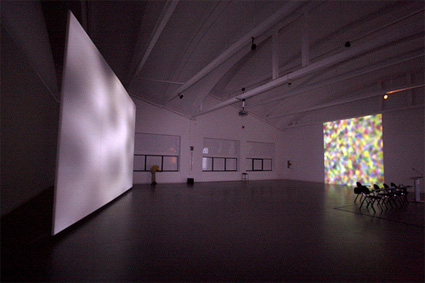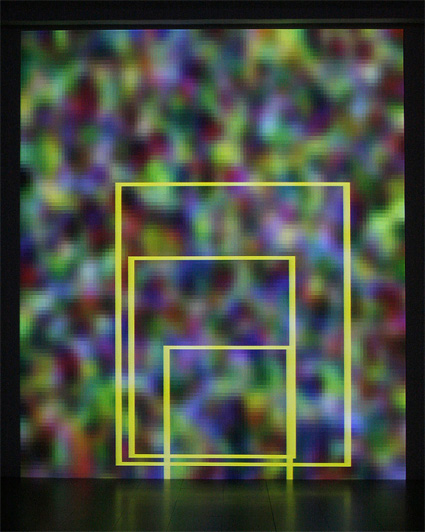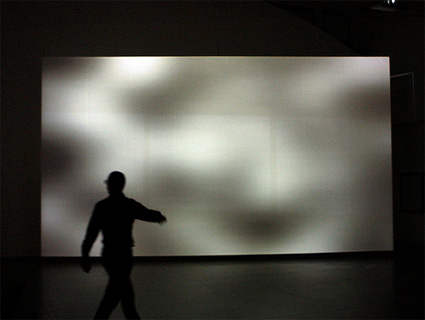Alan Dunning, Morley Hollenberg and Paul Woodrow are working since 1996 on the Einstein’s Brain, a project that explores how the brain can act as an interface between bodies and worlds in flux, that examines the idea of the world as a construct sustained through neurological processes. In collaboration with scientists, artists and technologists from around the world the team is investigating ideas about consciousness and embodiment through the realization of virtual environments and the construction of surrogate bodies.

The Canadian collective has a very uncanny and captivating installation on view until mid-January at LABoral Centro de Arte y Creación Industrial. in Gijón (Spain.)
Ghosts in the Machine, uses the ideas inherent in Electronic Voice Phenomenon (EVP) to examine ways in which we construct the world and extends it to the visual. EVP is the recording of errant noises or voices that have no explainable or physical source of origin. For some, the voices are subjective interpretations (similar to some form of anthropomorphisation) of what are actually random patterns of sound. For others, the voices are genuinely mysterious, opening up for example the possibility to communicate with other realms.

The installation Ghosts in the Machine looks simple: two large images are projected onto the walls of a room. One projection shows video static overlaid with text and the outlines of bounding boxes, the other shows b&w images of what appear to be blurry and ghost-like images of human faces. Ambient noise fills the space. Just at the threshold of recognition can be heard what appear to be human speech in different languages. A box, encloses tightly a CCD camera, only letting through the video noise inherent in the system. Audio patterns are scanned by a voice recognition system that looks for words and sentences which are then projected as words and played as voice-like sounds in the exhibition room.
Face tracking algorithms look for any combination of pixels that form the basic characteristics of a human face. When the software finds a combination of pixels akin to eyes, nose and mouth with a sufficient degree of symmetry, it draws a bounding box defining the area and zooms the area to full screen, its contrast and brightness is adjusted, blurred and desaturated to clarify the found images. More often than not the images produced fail to resolve themselves into anything recognizable. But occasionally, images are produced that are strikingly like a face although in actuality containing only the barest possibility of being so.
As the authors of the project explain: It is the very ambiguity and intedeterminacy of the images that allows the brain to reconfigure them as indexical. This work is one of several that examine systems of meaning making that rely on pattern recognition, and the problematized relationship between meaning and the meaningful.

The project examines how we construct worlds, and bodies in worlds, through pareidolia, (when a vague and random stimulus is perceived as significant), apophenia (the seeing of connections where there are none) and the gestalt effect (the recognition of pattern and form).
All images courtesy LABoral Centro de Arte y Creación Industrial.
Ghosts in the Machine, produced by LABoral’s Projects Office, is on view at LABoral, in Gijón (Spain) through January 12 , 2009.
More ghosts this way ladies and gentlemen: Man Machine 2, The Museum of Jurassic Technology, Haunted pixels, (don’t) Show me the Chip, Ghost by Olaf Breuning, and a vacuum cleaner to capture goblins.
